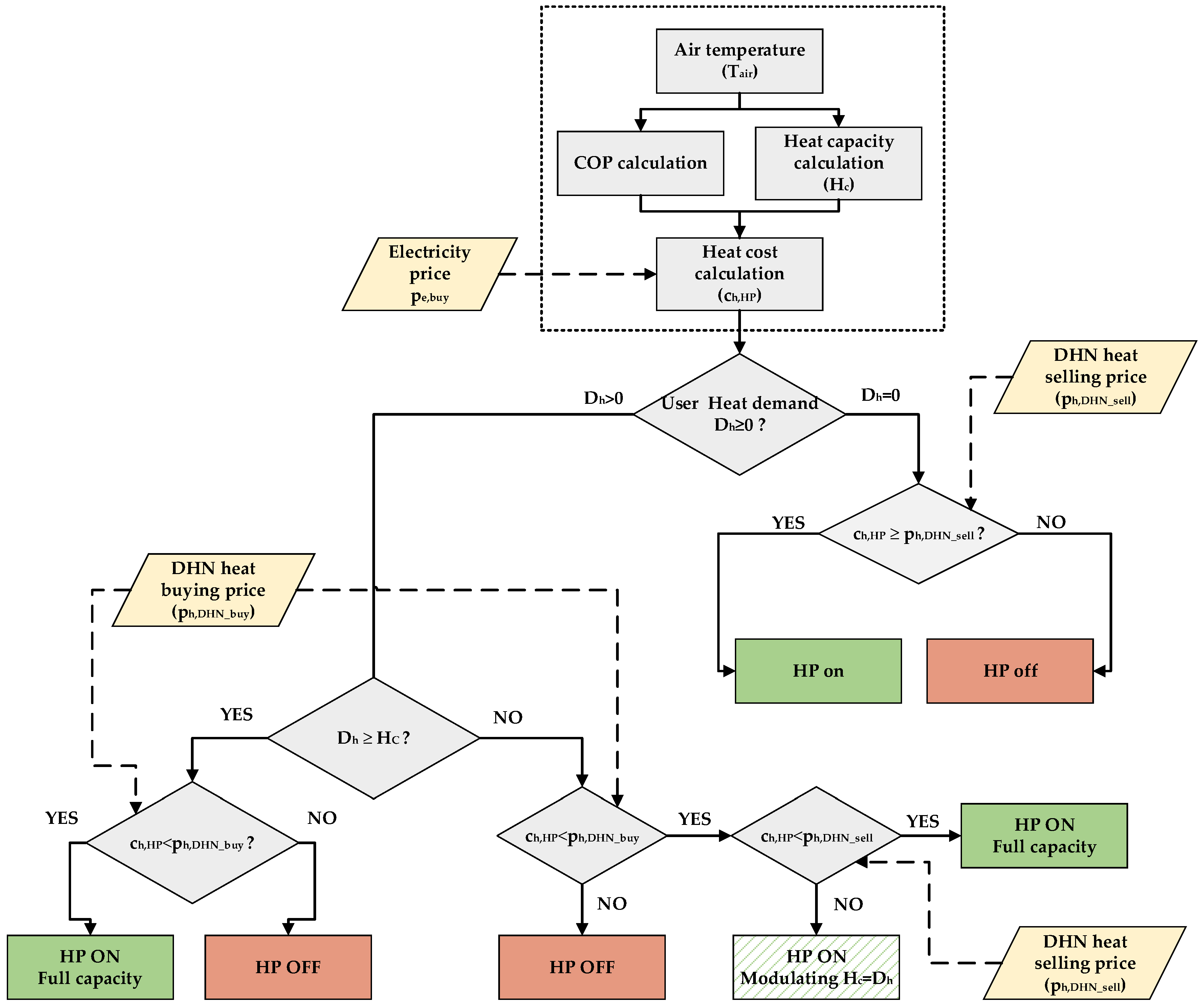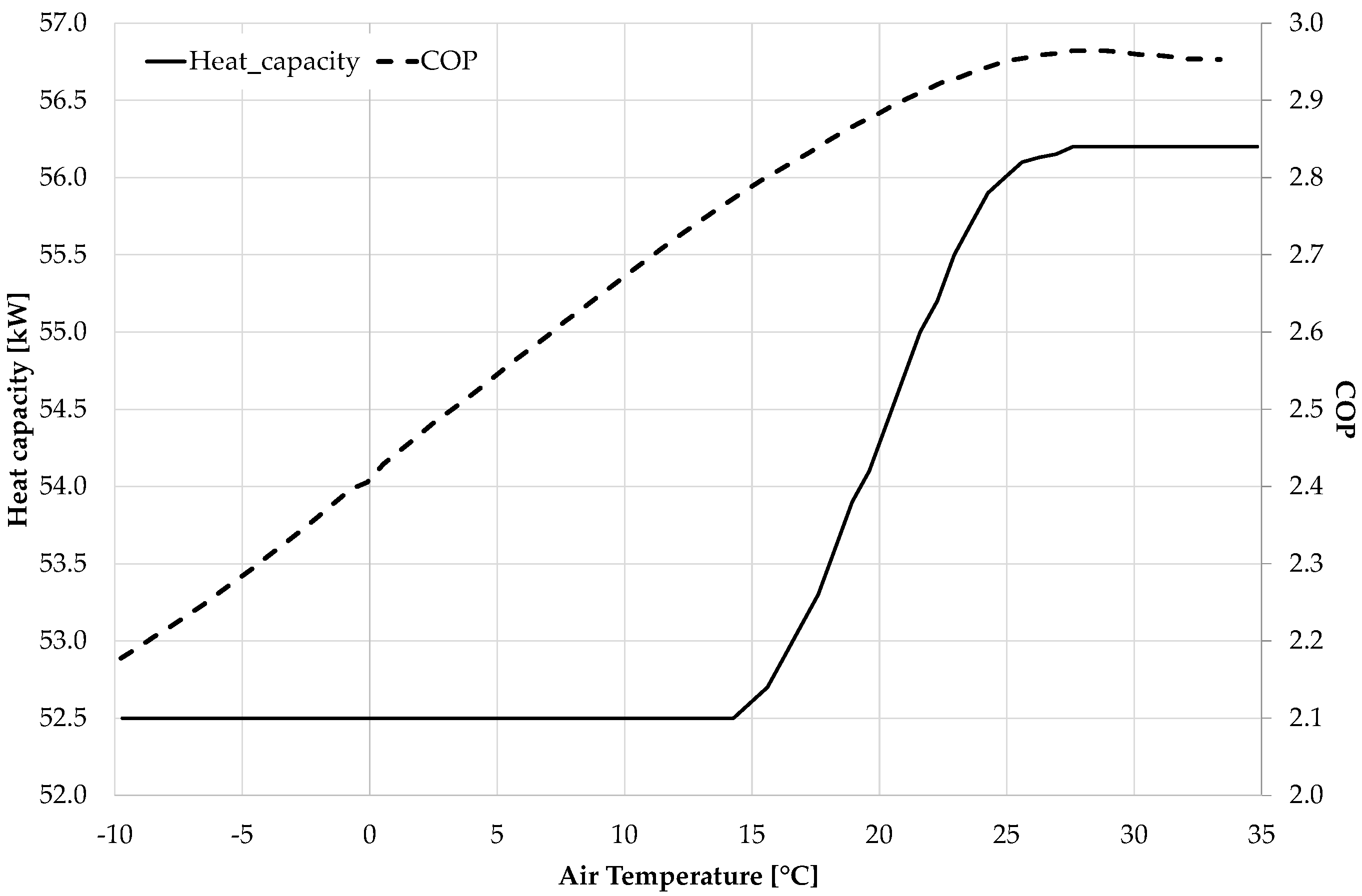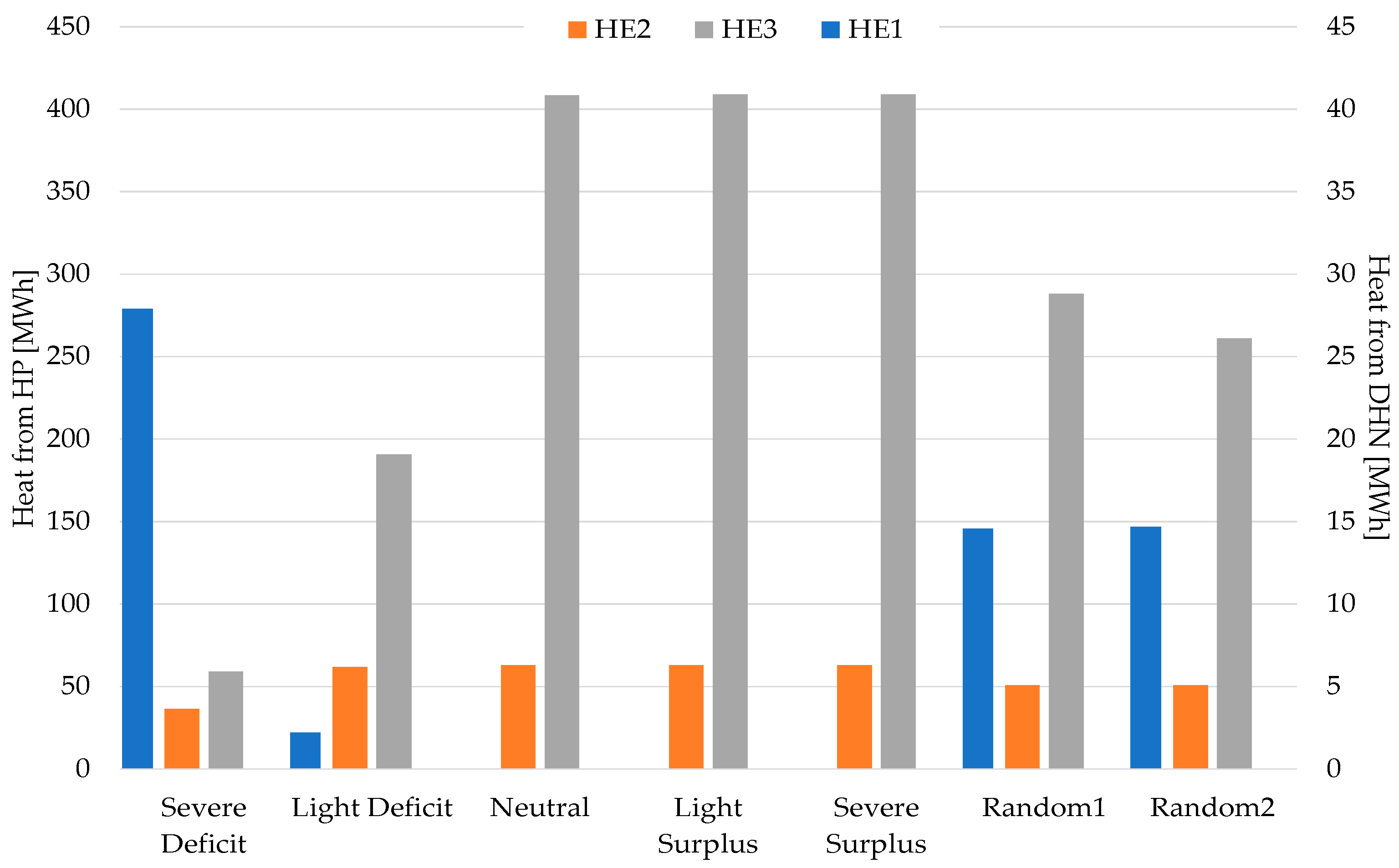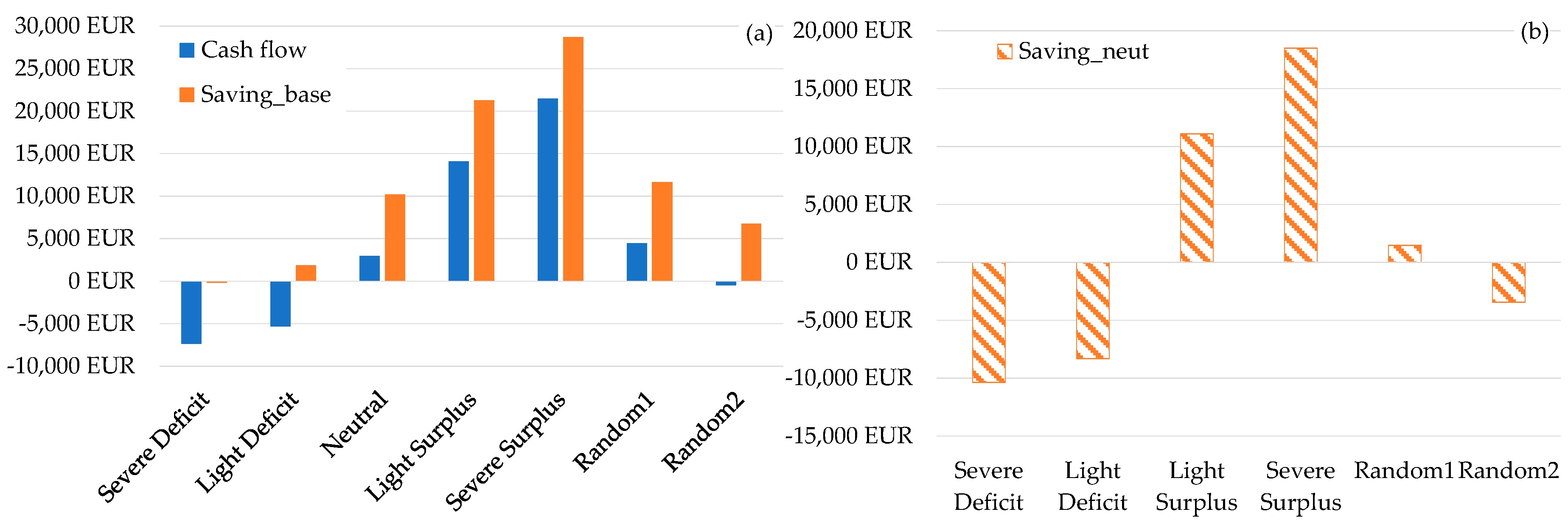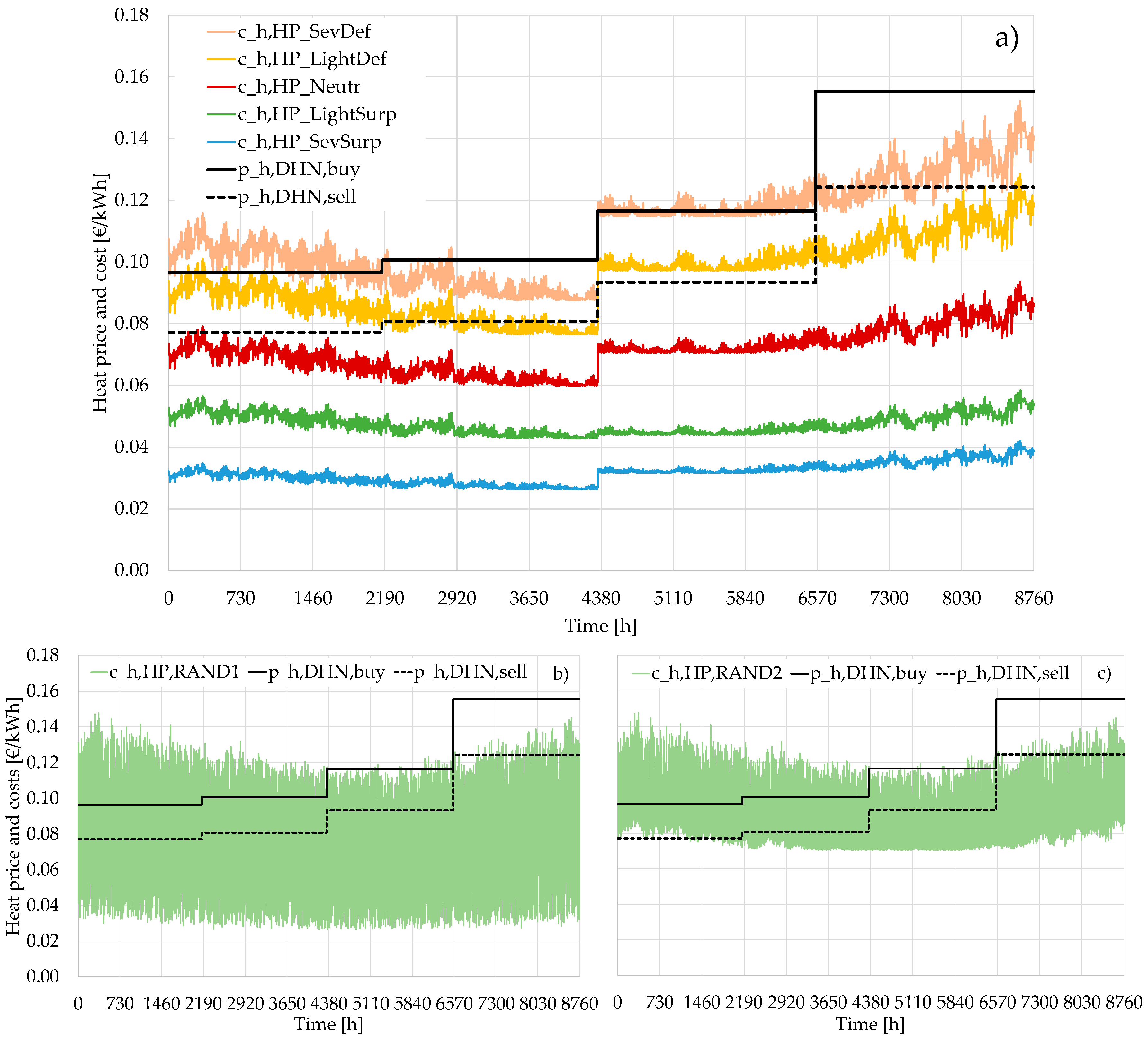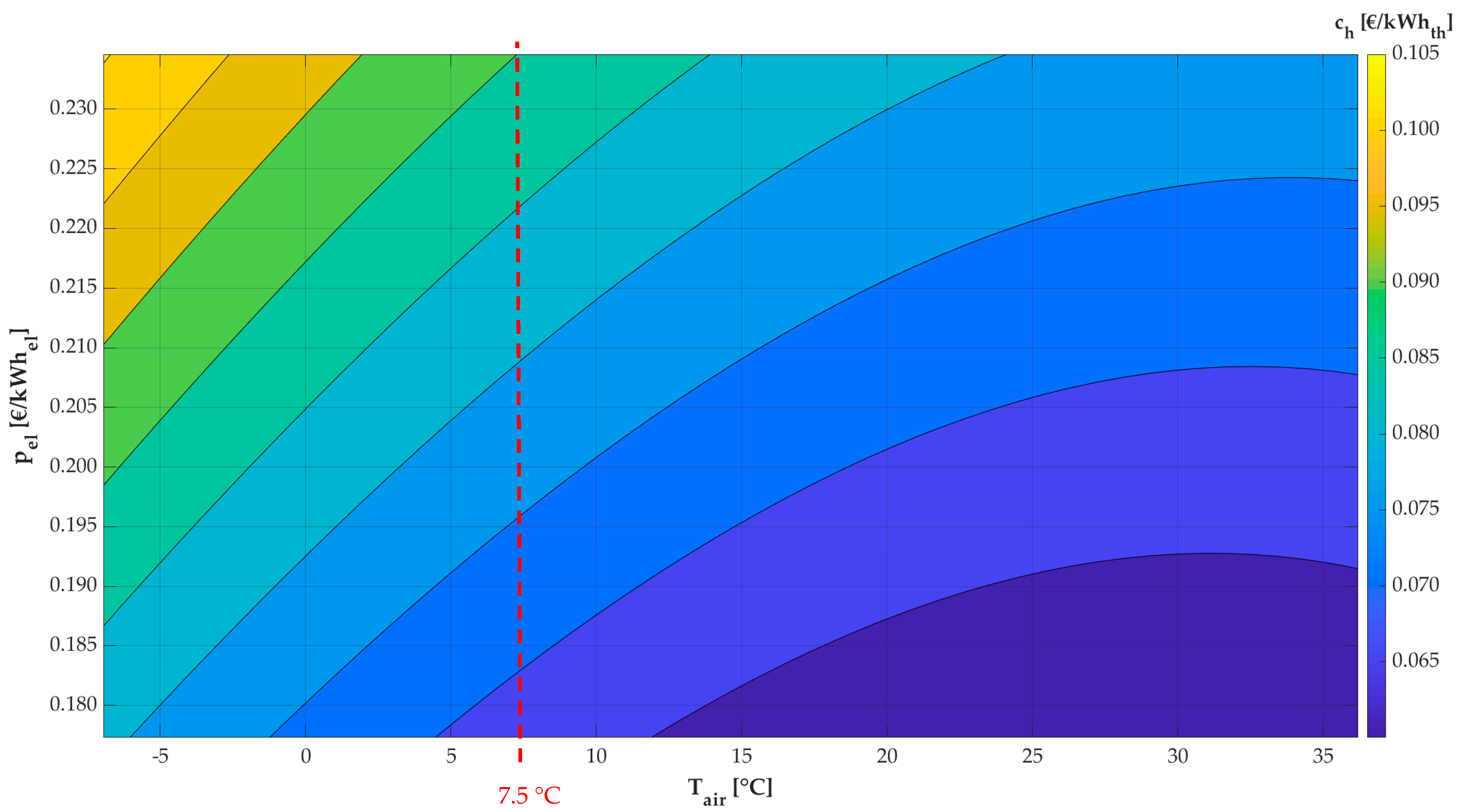Climate change and the recent energy crisis have raised the urgent need to increase the share of renewable energy sources (RESs) in the energy sector [
1]. In this regard, in 2021, the Climate Change Conference (COP26) reaffirmed the role of RESs in achieving the Paris Agreement’s goal of limiting the global average temperature rise [
2]. Regarding energy security, in the REPowerEU plan, the European Union raised the renewable target for 2030 to 45% as a strategy to reduce energy dependency from Russia [
3]. However, the large exploitation of RESs has led to the development not only of new energy conversion systems [
4] but also of new models of energy sharing such as renewable energy communities [
5]. Indeed, it is widely recognized that new energy-sharing strategies can contribute greatly to reducing carbon dioxide emissions and energy waste [
5]. However, to achieve these goals, technical and economic problems must still be solved [
6]. For instance, the sharp increase of the RES capacity in the electricity sector observed in recent decades has raised the issue of unpredictable surplus and deficit of electricity production. In this regard, different solutions have been proposed to deal with these moments. For example, some authors proposed solutions based on electricity storage [
7,
8], the management of the user demand [
9], or power-to-X technologies [
10,
11]. Regarding the latter, the idea of using electricity from RESs for non-electric purposes allows the coupling of the electricity sector with other sectors, such as transportation, gas distribution, chemical industries, and heating and cooling networks [
12,
13]. Focusing on power-to-heat technologies, heat pumps (HPs) are considered valid support for transmission or distribution system operators (TSOs and DSOs) in managing excess electricity in the grid [
14]. Indeed, through the provision of Demand Response (DR) programs, HPs could help TSOs in the moments of high surplus or deficit of electricity production [
15]. More specifically, HPs could be activated for electricity overproduction, and the produced heat (not consumed by the user) could be stored on-site in the building envelope or in other storage systems [
16].
Large efforts have been devoted by researchers to the investigation of HP capabilities to improve building operational flexibility. For instance, Zhang et al. [
17] called attention to the need to define metrics for assessing building-to-grid flexibility achieved through HPs, by considering the different purposes of the involved actors (i.e., grid operators, final consumers, etc.). Meesenburg et al. [
18] found that in the case of flexibility provision through HPs, higher exergy destruction during plant operation is observed, with a consequent increase in the final unit cost of the supplied heat. Lee et al. [
19] performed a review of HP controls for providing ancillary services to the grid. The authors distinguished the capability of HPs to provide service for a load following reserve or frequency regulation. The authors identified that HPs could provide a better flexibility while guaranteeing reduced heat costs and higher ramp rates than other technologies, although the lack of experimental studies was pointed out. Manner et al. [
20] investigated the capability of internet-connected residential HPs to provide primary frequency regulation. The authors found that only if residential HPs are aggregated, a sufficient capacity for primary frequency regulation is achieved. Bartolucci et al. [
21] showed that in the case of electric microgrids, HPs coupled to thermal storage could provide ancillary service while assuring cost savings of up to 30%. Tina et al. [
22] investigated the capability of commercial buildings in providing flexibility to help the TSO. A Mediterranean shopping center served by an HP was assumed as a case study, with two DR strategies compared. The authors found that a large flexibility potential exists throughout the year, although occupants’ discomfort could arise during summer. For large-scale HPs, Meesenburg et al. [
23] showed that they could provide primary frequency capacity. Arteconi and Polonara [
24] investigated the capability of an air-source HP coupled to an underfloor heating system to provide flexibility through DR. The authors implemented HP control based on the electricity price, which decreases (or increases) the HP temperature set point depending on high or low electricity market price. A substantial decrease in the peak demand was achieved. Vivian et al. [
25] found that HPs coupled to thermal energy storage in a residential district could contribute to reducing stress on the power grid. Ibrahim et al. [
26] developed a dynamic model of a variable speed HP for providing frequency regulation support. The authors provided a detailed state-space model of the HPs. Rasmussen et al. [
27] developed an algorithm for the activation of large-scale HPs for primary frequency support. The authors found that the strategy tends to increase the overall energy consumption but allows a better operation of the power system reducing the peak demand. Rodríguez et al. [
28] compared different strategies for implementing DR by using HPs in plus-energy dwellings. The authors found that a proper combination of variable temperature setpoints and dynamic electricity pricing could lead to 15% of cost savings. Gjorgievski et al. [
29] reviewed existing projects focused on DR via power-to-heat technologies. The authors pointed out that direct load control of power-to-heat technologies is more effective than real-time pricing requiring a quick response. Other studies developed sophisticated controls for DR in buildings via HP [
30,
31]. You et al. [
32] evaluated the operational flexibility of residential HPs, taking into account heat demand uncertainties. Schibuola et al. [
33] compared three control strategies for DR through an HP coupled with a solar thermal plant and a photovoltaic system. Two of them relied on the hourly electricity prices, and one was based on HP activation using only electricity produced by the photovoltaic panels. The last strategy allowed for cost reduction and energy savings. Research has also considered the possibility of using district heating networks (DHN) for the storage of surplus heat produced by distributed HPs [
34]. It is worth noting that, in this case, the user connected to the DHN could act for certain hours either as a heat consumer or producer (termed the “thermal prosumer”) similarly to the option with the electricity grid [
35]. Research focused on the integration of HPs into DHNs has covered a broad spectrum of studies: from solving technical issues (e.g., different operating temperatures [
36], pressure imbalance due to the presence of multiple heat producers [
37]) to the lack of a proper pricing mechanism [
38] or a well-established regulatory framework [
39]. Regarding the regulatory framework, the concept of “third-party access” (TPA) has also been extended from the electrical grids to the DHNs. In general, regardless of the heat sources (e.g., thermal RESs, HPs, and industry), economic and policy conditions should be provided to grant access to new heat suppliers to the DHN [
40]. It is recognized that TPA facilitates higher competition (and consequently the efficiency) of heat production, and reduction of greenhouse gas emissions [
41]. Some projects have also considered TPA for solar thermal prosumers in DHNs [
42,
43]. Finally, the effects of energy pricing on the integration of heat supplied by distributed producers with HPs have been investigated. For instance, Østergaard et al. [
44] highlighted the importance of taxes in the electricity and heat prices in promoting the increase of the capacity of the distributed HPs in the DHNs. Dominković et al. [
45] investigated dynamic pricing for DHN systems in the presence of multiple producers. The authors found that the inclusion of HPs could lead to a lower marginal heat cost and reduced carbon dioxide emissions.
The previous literature review pointed out that numerous published papers have recently investigated the capability of users with HPs to support the grid operators in the times of surplus/deficit of electricity from RESs [
46]. However, most studies investigate strategies for promoting the operational flexibility of the HPs not connected to DHNs, with a primary focus on small-capacity units supplying heat to a single dwelling or a small group of energy users with either a fixed or stochastic load. To the authors’ knowledge, there is an apparent literature gap regarding the operational flexibility of distributed heat pumps connected to DHNs with room for increased the HP operational flexibility due to the possibility of selling excess heat to the network. At present, such a configuration becomes of particular interest because of the relevant role recognized by energy communities in the transition toward sustainable energy. Additional novelty of such strategy is in the perspective adopted in this study with respect to energy pricing: in most of the published literature, the HP operational flexibility is investigated by assuming a given energy price profile according to a typical “price taker” approach; in this paper, however, the potential effects of discounts or penalties applied to the electricity prices are investigated, thus also rendering the results of potential interest for policy making. In line with this goal, a reference arrangement involving an HP connected to a low-temperature DHN with a third-party access option is considered, which qualifies the building as a thermal prosumer capable of gaining revenues from selling the heat. The economic boundary conditions (e.g., the purchasing prices of electricity and heat) and technical constraints (e.g., temperature and pressure setpoints of the DHN) must be taken into account, since they affect the operation and profit of thermal prosumers [
44,
47]. Focusing on the economic conditions, the present study investigates the effects of ad hoc changes in the electricity purchasing prices on the operational flexibility of a thermal prosumer with an HP and coupled to a DHN. More specifically, this study will assess whether a change in the component of the electricity price related to the “power grid management and support to the energy system” could be:
To show the energy and economic benefits of the proposed strategy, an office building located in Northern Italy supplied by an HP and connected to a DHN is adopted as the case study. A profit-oriented heuristic algorithm for HP operation is developed. The analysis is based on a validated model of the prosumer’s substation in the DHN, and an annual dynamic simulation is performed in the Transient System Simulation Studio (TRNSYS). Energy savings and economic revenues will be calculated and compared to a reference scenario characterized by the adoption of the DHN as the only heat source for meeting the user’s thermal demand. The analysis considers some alternative scenarios based on different variations in the electricity purchasing prices.
